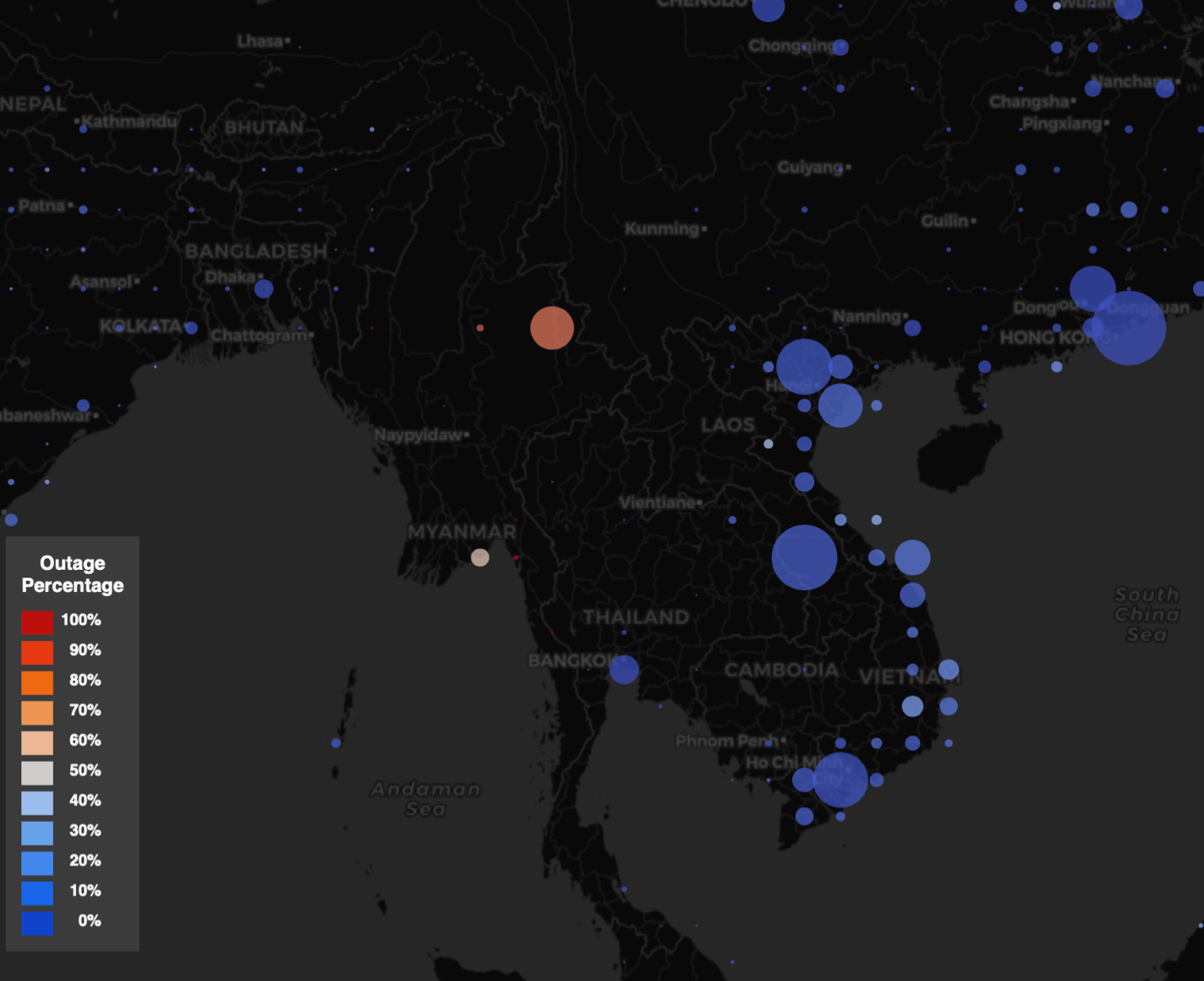Due to working remotely during the pandemic, we’ve all been highly dependent on our internet connection. While our experiences of internet outages can be frustrating, they are typically resolved within a short period of time. Mass internet outages, on the other hand, affect a large population and are often attributed to a common source.
Increasingly, we have seen that internet outages can be directly linked to not only natural and environmental disasters, but also political events that are unfolding across the globe. From severe power outages in Texas to internet shutdowns by the military in Myanmar, 2021 has already witnessed a variety of mass internet outages and the consequences that follow.
The ability to quickly and accurately detect these outages is the first step towards a better understanding and ready response to fixing the issue. To achieve this, John Heidemann, research professor of computer science at USC Viterbi and principal scientist at USC’s Information Sciences Institute (ISI), and Guillermo Baltra, graduate research assistant, sought to devise a system to monitor internet outages.
The ANT Lab (Analysis of Network Traffic Lab) is a research group at USC dedicated to improving the internet. This project led by Heidemann fits into the ANT Lab’s broader research on the internet. In addition to internet outages, the ANT Lab conducts research to improve internet performance and security.
Building on a scanning system by Yuri Pradkin, systems programmer at ISI, researchers at the ANT lab were able to create Trinocular, a complex system which detects internet outages around the world.
In essence, Trinocular works by sending messages to IPv4 address blocks, or groups of 32-bit numbers which are each unique to a computer network.
“An address block is 256 adjacent IPv4 addresses, like 192.0.2.0 to 192.0.2.255,” explains Heidemann. “If a block used to respond to us and many of the addresses suddenly stop responding, we infer a network outage between us and the target block.”
They probe each block every 11 minutes. To avoid inaccuracy, results from several independent observers are merged. This probing process is repeated on a 24/7 basis at 6 different locations worldwide.
Several major improvements were made to the original Trinocular model since its initial conception in 2013.
“PhD student Guillermo Baltra has extended it with additional algorithms to handle some challenging targets. Those have allowed us to expand coverage from 4M blocks to 5M—94% of the internet that responds,” says Heidemann.
Whereas the initial system did not operate on real-time, the newer and improved version runs with near real-time data processing. This can be especially important when dealing with current events that are unfolding as we watch, such as the Myanmar military coup.

A map of internet outage across Myanmar and neighboring regions through Trinocular.
Following the military coup, Myanmar has experienced consistent internet outages as well as blocked access to websites like Facebook and Twitter. Though Myanmar’s political future is uncertain, Trinocular is a technology that can provide a degree of clarity and factuality to the current situation.
“By providing technical information about the Internet in Myanmar, we hope we can provide factual observations about what’s really going on,” explains Heidemann. “Confirming that the Internet is now off shows the level of concerns they have about outside information getting in and the population using the Internet to coordinate.”
Though the occurrence of internet outages are often out of our control, having access to high accuracy real-time data is a leap towards better understanding and even preventing future outages.
Published on April 29th, 2021
Last updated on May 16th, 2024












